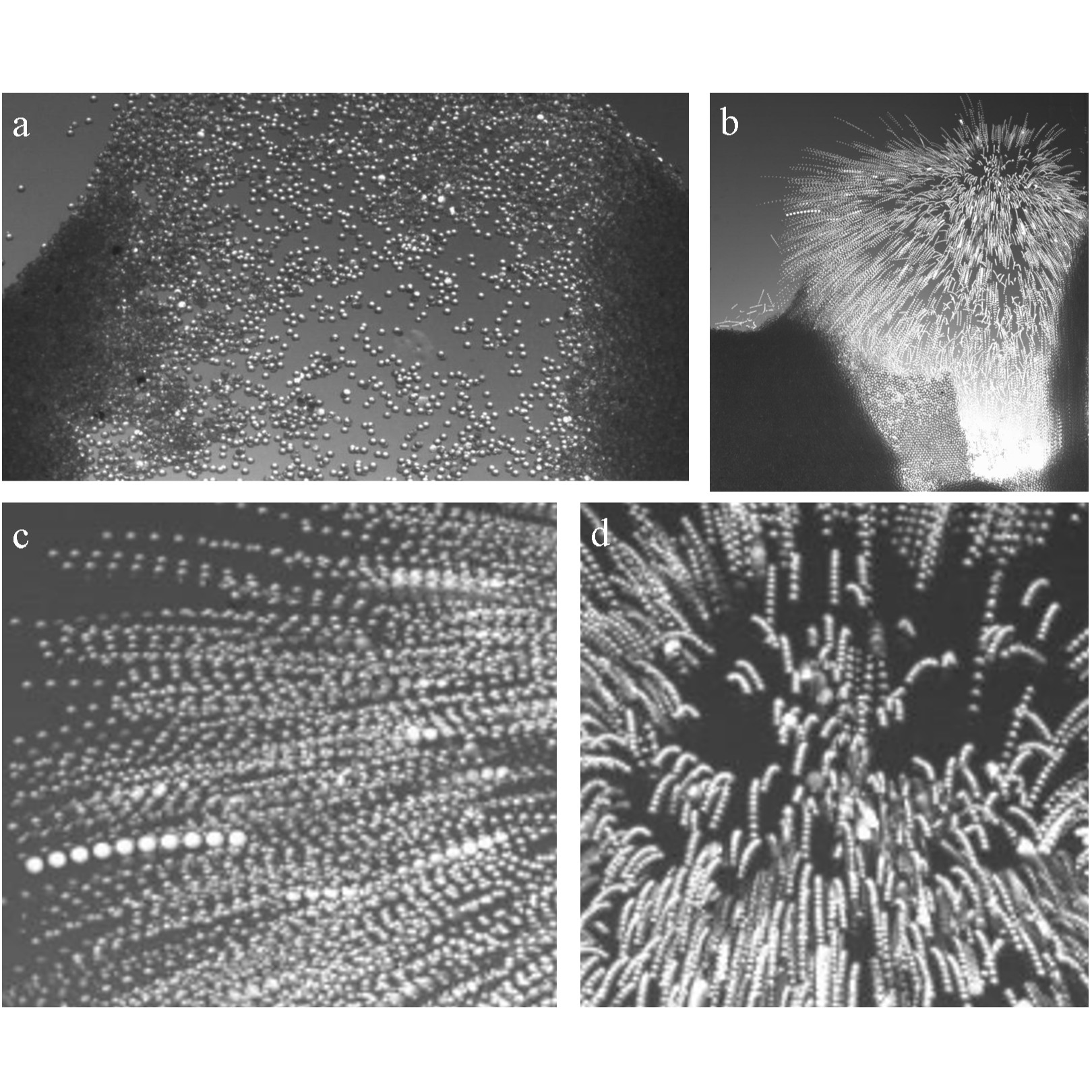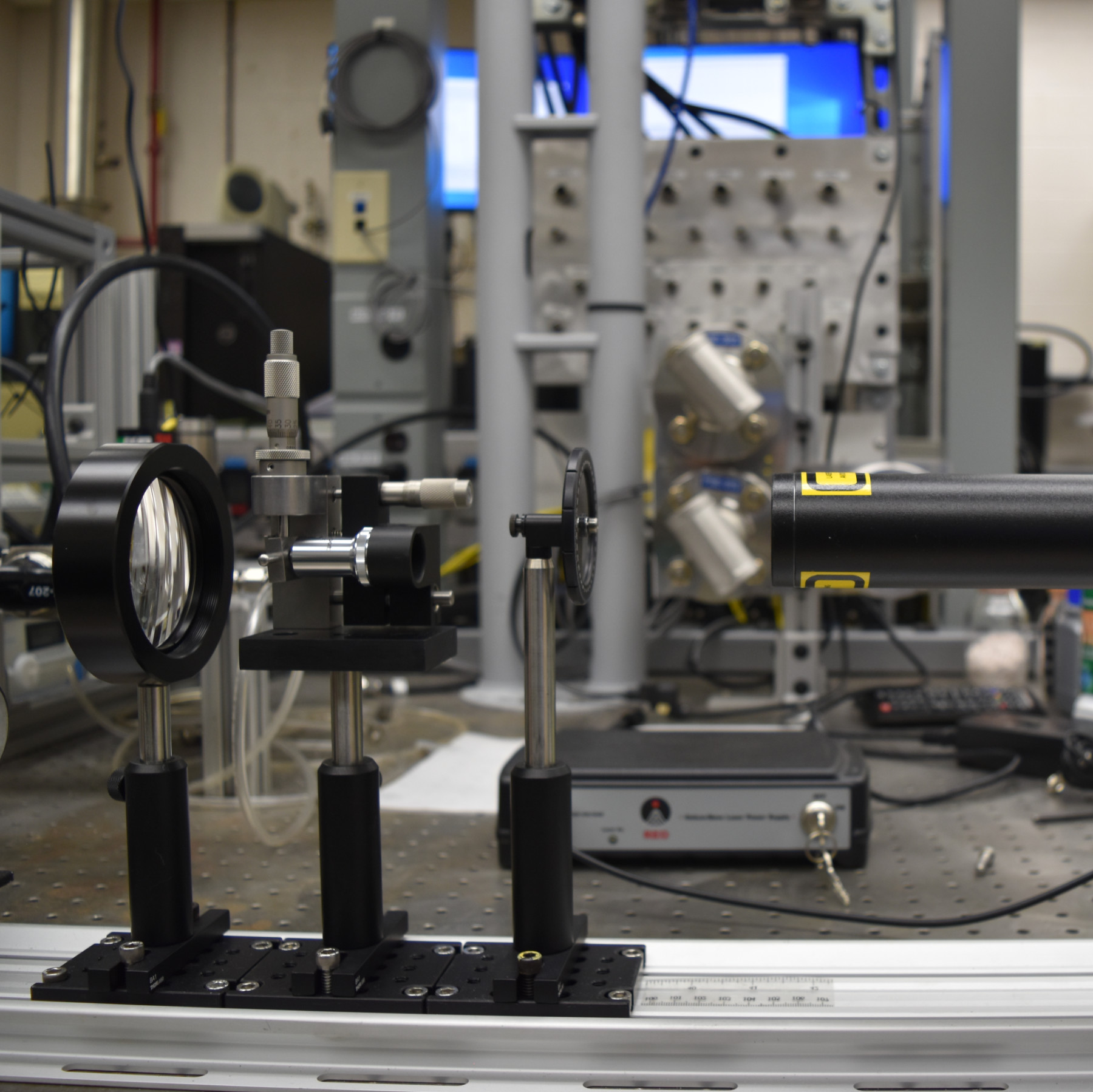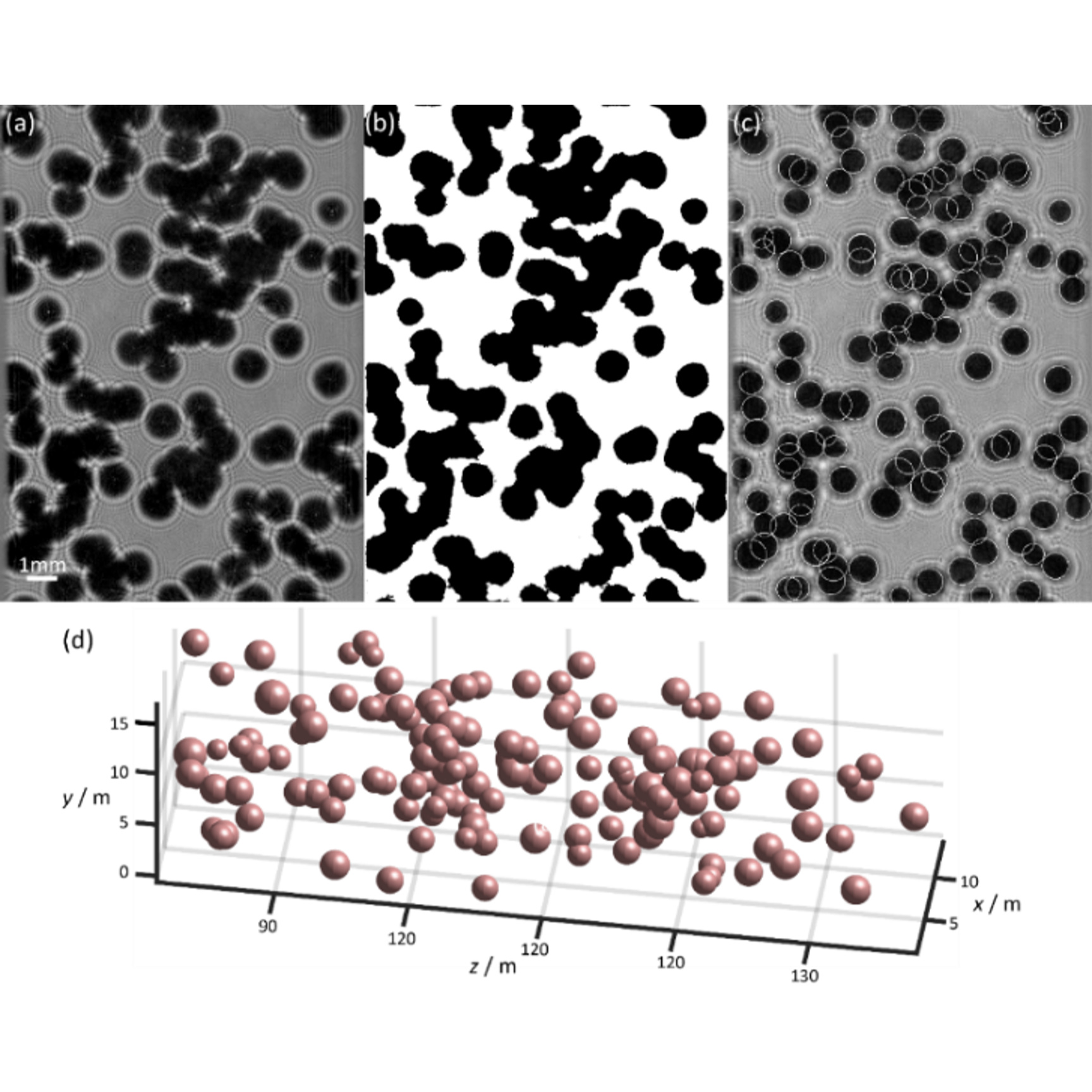Home » Research » Laboratory Studies » Advanced Measurement Techniques
Advanced Measurement Techniques
The MFAL facility is also focused on developing innovative and advanced techniques and instrumentation for studying multiphase flow. The lab has the following diagnostic capabilities:
- High speed visualization and quantification of multiphase flows.
- Eulerian flow/particle velocity field extraction: Particle Image Velocimetry (PIV)
- Lagrangian flow/particle velocity Particle Tracking Velocimetry (PTV)
- Digital Inline Holography (DIH)
- Machine learning enabled particle image processing
High Speed Imaging
High speed imaging techniques are frequently used in the lab to unravel processes with short time scales. The figure a at right illustrates particle distribution at the start of the bubble bursting. Figure b provides sample images showing particle trajectories during bubble bursting processes. The length of the trajectories corresponds to the distance particle travels during a period of 10 frames (0.01 s). Figure c-d is a zoomed-in version of the bubble edge(c) and center(d) showing the striking difference in particle motions.
Digital Inline Holography (DIH)
DIH is a non-intrusive 3D method to record the interference pattern between a reference beam and the particle scattered light. The interference pattern is called the hologram which encodes both the depth and the size/shape of the particles. In the lab, we have developed methods to numerically reconstruct the hologram at multiple depth levels that provides the non-intrusive quantification of particle size, 3D particle location, and velocity.
Bottom right: Imaging processing procedures to extract three-dimensional particle locations. (a) An enhanced sample hologram of Zeolite 13X 20–35 particles after background subtraction, (b) mask of segmented particles generated from depth compressed minimum intensity image (not shown), (c) detected particle images (white circles) using circular Hough transform, and (d) 3D visualization of data processing results from a single hologram.
Particle Tracking Velocimetry (PTV)
PTV is a non-intrusive optical measurement method whereby individual particle velocity is obtained over time by tracking individual particles. The technique is a Lagrangian approach to measuring multiphase behavior and can be achieved in both 2 and 3 dimensions in the flow.
Figure a: tracking particles colliding on flat surface to measure restitution coefficient. Figure b: tracking of micron scale particles to measure the flow field velocity distribution in a standing pipe of a circulating fluidized bed. Figure c: tracking wood particles in binary LDPE-wood mixing fluidized bed to measure wood particle velocity and orientation distribution.
Machine Learning (ML) Enabled Image Processing
The MFAL uses the computational power and software tools provided by NETL’s Joule supercomputer and the NETL WATT ML facilities along with ML techniqes to increase the speed and accuracy of the image analysis process. This allows the study of larger and denser multiphase flow systems. The figure at the right illustrates the use of a machine-learning-based image processing technique to determine wood particle orientations in fluid bed of plastic beads and wood pellets. The left image is a snapshot of the wood and plastic particles. The figures moving from left to right illustrate the ML process to isolate the wood particles only for measuring details of velocity and orientation in the flow.






